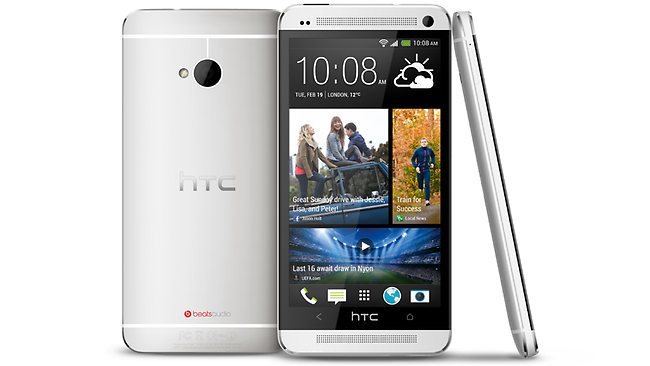HTC showed off some capabilities of its new premium HTC One Android handset at a ritzy Australian launch in Sydney last night.

You could be mistaken for thinking the silver version of the One was an Apple device: its thin distinctive metallic unibody chassis is reminiscent of Apple’s MacBook Pro with Retina, with a slight bulge at the middle-back to match.
With its 4.7-inch display that sports a whopping 468 pixels per inch (the iPhone 5 has 326 ppi), the One is a handsome 4G-capable handset that’s light, thin and compact to hold.
It’s about the first phone we’ve seen with the Qualcomm Snapdragon 600, quad-core, processor rated at 1.7 Gigahertz. Its 2300 milliampere hour battery is an improvement over the 1800 mAh battery found in the One X released last year which made battery life a weakness.
HTC has taken Google Android Jelly Bean and added its own home screen interface called HTC BlinkFeed. At first glance the squares of BlinkFeed look a bit like the metro interface of Windows Phone 8 – but they don’t allow you to configure your home screen square by square.
Instead BlinkFeed populates your home screen in line with the news feeds you choose – a bit like what the app FlipBoard does. In Australia in BlinkFeed, there is a choice of news from around 16 online news sources but HTC says it is working to add lots more. So configuration is limited here for the time being.
Nevertheless HTC deserves congratulations for sprucing up the boring Android home screen interface with its higgledy-piggledy selection of widgets. Many users remain at a loss to know how to fill the many blank home screens on Android devices.
Possibly the most interesting – and most contestable part of the HTC One is the camera. HTC is big on spruiking the camera’s imaginative new picture system ‘Zoe’, and we’ll come to Zoe soon. It’s actually interesting and original.
However the back-facing camera itself is around only 4 megapixels in resolution – which is half that of last year’s HTC One X and a long way behind specs of , say, the new Sony Xperia Z - 13mp.
HTC last night went to a lot of trouble in talking up the camera’s capability, describing it as ‘UltraPixel’ in resolution and invoking the name of New York Times technology columnist David Pogue who apparently once said: “The more megapixels a camera has, the better the pictures. It's a big fat lie.”
HTC instead is launching a pixel size war rather than a pixels numbers war. It says the camera sensor’s 2.0 µm (micrometres) pixels are capable of trapping 300 per cent more light than 1.1 µm pixels found on other mobile device cameras, and photos look good in low light. We’ll be testing this in our formal review.
HTC Zoe – the camera software that comes with the HTC One – is innovative. Whenever you snap a photo, Zoe simultaneously takes a 3.6 second HD video and 20 photos at 6 frames per second. That opens up lot of possibilities.
Still photos in Zoe albums display both as stills and short moving sequences, and Zoe can automatically create videos based on album contents.
You can also adjust group shots to make sure everyone is smiling. Perhaps the most dramatic demo we saw last night was Zoe’s ability to delete people from shots altogether – provided it has collected an image of the vacated background. We saw people instantly disappear in a puff from Zoe pics.
Near Field Communication (NFC), HDR video, DLNA and 4G LTE network compatibility are some of the One's other features. It is due to go on sale in Australia next month with all three major Australian carriers stocking it. Outright it is expected to cost around $750.





